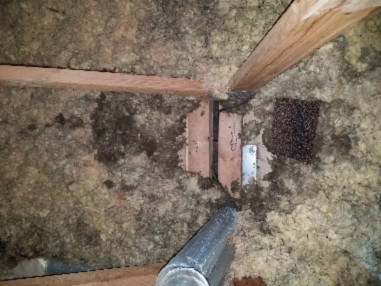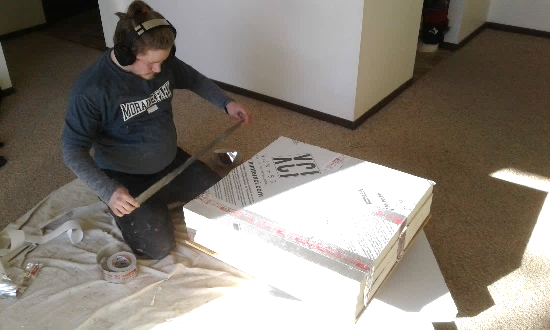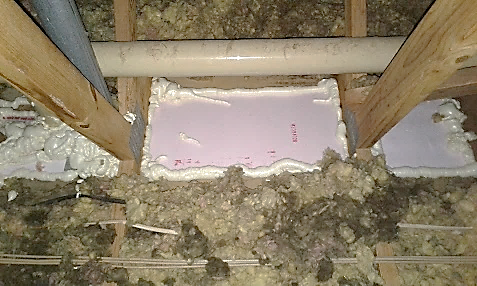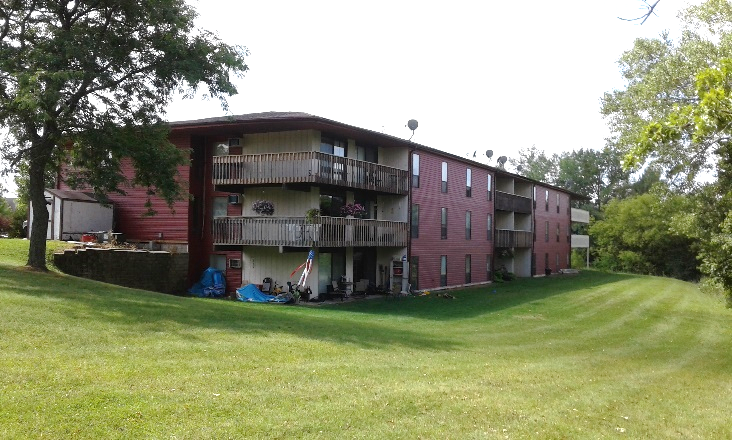Assessing the Extent of Air Leaks and Poor Insulation

There were multiple air sealing issues in the 9,500 square foot attic of Golfview Terrace Apartments. The original yellow blown fiberglass attic insulation had darkened around areas with air leaks (see photo). We discovered that the double top plates running the length of the third-floor hallway were sources of significant air leaks.
Additional air leaks were found in many places where wiring, plumbing, exhaust fan ducts, and the chimney transitioned from the heated conditioned spaces below up to the attic. Additionally, the attic hatch fit poorly, with some of the trim in poor condition. The 3” to 5” of insulation that had been installed was only rated at an effective insulation value of R11, far below the recommended levels for our climate zone.
Finding the Right Accurate-Airtight Exteriors Energy Efficiency Solutions



After an inspection and analysis of the existing insulation and air leaks, our team set about fixing the problem. We used one part spray foam, caulk, and rigid foam board to air seal the attic. Sheet metal and fire-rated caulk were used to safely seal around the chimney. The attic hatch was re-built with rigid foam board and properly weather-stripped for a much tighter fit. Ventilation chutes were added where needed. Finally, new cellulose insulation was loose blown to an R38 insulation value (R50 loose blown cellulose is recommended).






